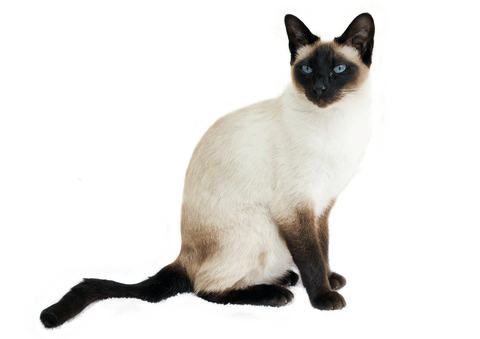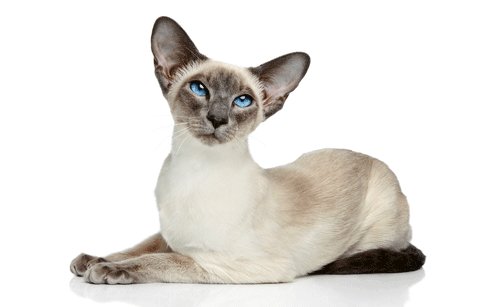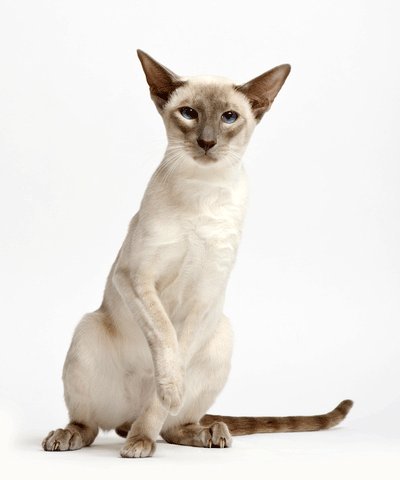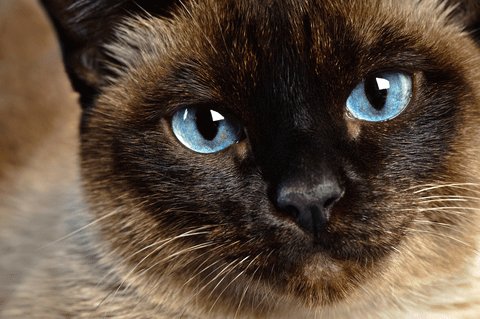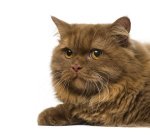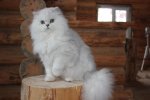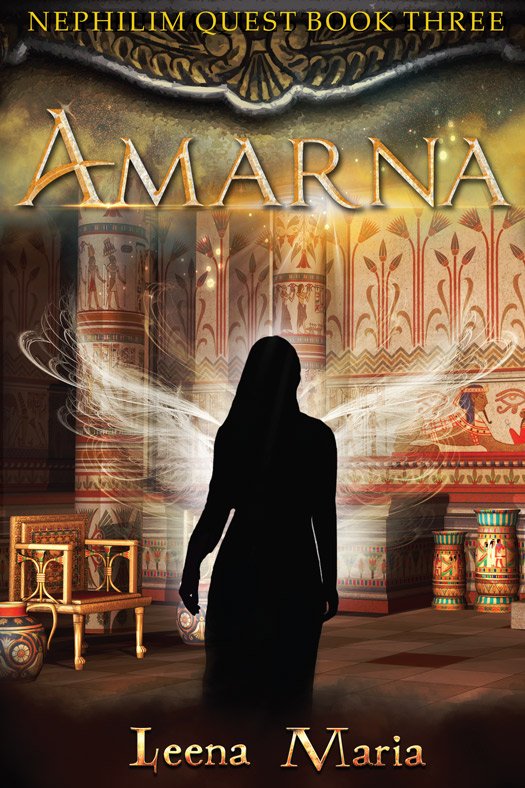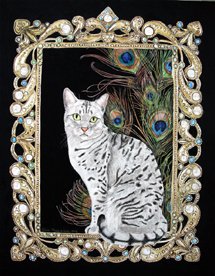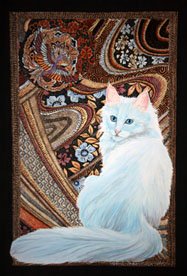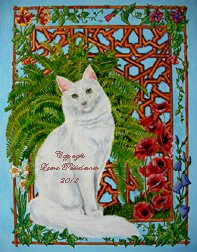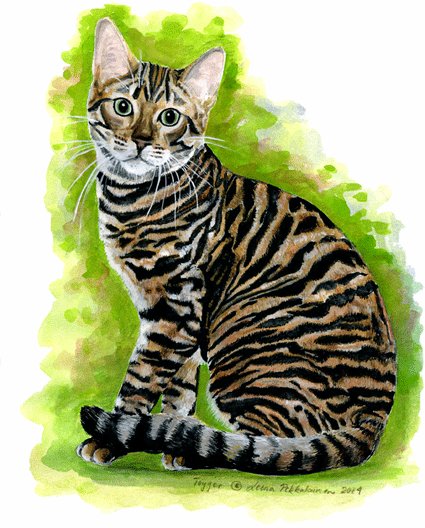Siamese Cat History
The Siamese cat history is a long one… Could there be a cat breed as well known as the Siamese, or more recognizable? Even people who are not at all interested in cats (yes, there really are such odd folks) know what a Siamese cat looks like.
So what is the Siamese cat history like? How many know the fascinating myths behind the Siamese cats? Or how it came to the Western world in the first place?
The Siamese is one of the oldest naturally occurring cat breed in the world. There are many theories of its origin.
They may descend from wild cats, but this has not been scientifically proven.
Copyrighf of image Matthewgore at Dreamstime
It has also been speculated that the Siamese cat history began when Egyptian traders took their cats in ancient times to Far East, and that their cats developed into Siamese cats. Now this sounds like a fascinating story, but I don't see much reality behind it. First: why would they have developed suddenly into pointed cats there is no sign of in Egypt? Surely the genes would have produced something similar in Egypt as well? If you wish to read about the oldest cat breed in the world that really did develop in Egypt, check the Egyptian Mau.
And secondly: the Egyptians were not a great sea-faring nation. They preferred only to sail along the coast. Their main journeys were taken alond the Mediterranean coast between the Nile Delta and Byblos. They also sailed along the eastern coast of Africa from the Red Sea coast, south to the land of Punt (Ethiopia) for ivory, gold, and exotic plants and animals. But they did not dare the open seas, so it is highly unlikely they sailed to Far East, with or without cats. Of course their trading partners may have carried Egyptian cats on their ships, but even in that case I feel if the Siamese has Egyptian genes, these same genes should have produced something Siamese-looking in the Egyptian cat world as well.
Well, moving along in Siamese cat history - another theory says that the Annamese cats mixed with the local cats. The Annamite cats entered Siam when the Cambodian empire of Kymer was conquered by Siam.
And another theory about the Siamese cat history simply states that the looks of the Siamese were the result of a spontaneous mutation. Certainly the reason their coats look the way they do is the result of a very interesting gene not found elsewhere.
Siamese Cat History:
first mention in
Cat Book of Poems
Whatever the origin of the beautiful Siamese cat, the cat was mentioned in the famous Cat Book of Poem (or "Treatises on Cats") Tamra Maew, which was written between 1350 and 1767 in the ancient Siamese capital, Ayudha. The exact date when this cat, called Wichian Mat or Wichien-maat appeared in the book is not known. The reason is that the book was written on palm leaves, and when they became fragile, the book was copied and new things added as time passed. Aydha was burned by the Burmese in 1767, and this is the latest date for this book. If you are traveling to Thailand, you may see a copy of this book at the Bangkok National Library.
In this book there are illutrations of slim, pale colored felines with darker ears, feet and tails. Siamese cats for sure, so we could say this is the first written / artistic proof of the Siamese cat history
The cat's name, Wichien-Maat is really beautiful. It is translated as "Moon Diamond". Western names for the Siamese were also the Palace Cat, the Royal Siamese, and the Royal cat of Siam.
Image Copyright by Jagodka at Dreamstime
Royal Cat of Siam
According to Siamese cat history legend this breed was only allowed to be kept by the Siamese royal family. And only they could give these cats as precioud gifts to favored dignitaries. If someone was promoted to nobility, he was given permission to own Siamese cats as well.
Therefore, owning a Siamese cat was a great honour. If anyone stole a Siamese cat, the punishment was death.
It was forbidden to take male Siamese cats out of the country, because the king of Siam wanted to keep breed strictly royal.
That's the legend. Reality of the Siamese cat history may have been something completely different. There is a letter by Dr Hugh M. Smith, who lived in Siam, and in this letter he states that anyone could own a Siamese cat and that people were keeping them as pets. He goes on saying there was no such thing as a royal cat. Also no official royal breeding program has been found in research.
Interestingly Dr Smith mentions two kinds of cats in Siam: the now-familiar Siamese, and another, mauve-colored cat with yellow eyes.
Interestingly the Siamese cat was also called Opal cat in the very early stages after its arrival in the Western world.
Here you can read more about the Cat Book of Poems, with nice photos.
The Siamese Arrives to the Western World
The Siamese appeared in Europe and US in the late 19th Century. However, already in 1793 a German explorer, Peter Simon Pallas, described cat that had "quite black ears, paws and tail". This cat was more dainty than ordinary cats. He commented that the cat was of middle size and had a longer nose than cats normally did.
Britain
Officially, though, the Siamese cat history in Europe begins when the cat made its entrance to Britain in 1884. The then Vice-Consul of Britain in Siam, Edward Blencowe Gould, upon leaving Siam, was offered by the king of Siam, Chulalongkorn, any gift he'd like. The Vice-Consul stated that instead of other valuables, he'd prefer a pair of Siamese cats. The king was not overly happy about the request, but being a man of his word, agreed. A pair of seal point Siamese cats were given to Edward Gould.
The Vice-Consul then gave the pair to his brother, Owen Gould. And he, in turn, presented the pair to their sister, Lilian Jane Veley, when he returned to England. The cats in question were named Mia and Pho. (Eventually Lilian Veley became the founding member of the Siamese Cat Club in 1901, so the breed has a lot to thank her for)
There are hints in private correspondence, that actually the cats were bought from a local bazaar, and that the gilded story was invented to give the cats more prestige.
Mia and Pho got three kittens which were called Duen Ngai, Kalohom and Khromata. They were show at the famous Crystal Palace exhibition in 1885. Unfortunately none of the kittens surviced but perished soon after the exhibition. The reason is no longer known.
|
This is not the first time Siamese cats were shown in Britain. It may be that already in 1871 Siamese cats were shown at the Crystal Palace exhibition. If this is true, where did they come from? There area stories of Siamese cats being shown in European zoos, so perhaps these 1871 cats were their descendants? Also the question arises are we interpreting these cats as Siamese cats with their charactreristic darker points, when these could simply have been "cats from Siam"? DIfferent kind of Siamese cats were imported to Britain in 1886, imported by Mrs Vyvyan together with her sister. |
Copyright of image: Isselee at Dreamstime. |
These were leaner than the ones already in the county, with more wedge-type heads and larger ears, and more clearly pointed coloring. They looked so different form the rounder shape or ordinary cats people were used to, that they were described in the press as "An unnatural nightmare of a cat" (well, press seemed to prefer dramatic headlines in those days too… Siamese lovers canot understand such a point of view). They looked a bit scary to the Victorian mind, and another article stated, that other breeds of cat were safer to live with.
Despite these scary press reports the admiration for these cats began to grow. More cats were imported and a serious breeding program began. Even today most of the Siamese cats in Britain can trace their lineage back to the same 11 early cats imported to the country in those very early days of the breeding program.
The cats appeared in cat shows, and the first Siamese cat to win the title of Champion was called Wankee. The year was 1898.
During these early days crossed eyes and kinked tails were accepted, and the very first British standard for Siamese states the kink in the tail as something the breed was distinguished by. The head, even though wedge-like, was not as extreme as in today's modern Siamese. It was rounder, and the ears were smaller. The cat had a strong squint.
France
The first Siamese cats were brought to France by August Pavie. He was a French diplomat who, upon returning to France, brought a pair of Siamese cats with him.
America
The first Siamese cat history in the States was said to be a gift to the First Lady, Lucy Webb Hayes, wife of Rutherford B. Hayes. The gift-giver was the American Consul in Bangkok, David B. Sickels, and the year was 1878.
Here you can read the letter Mr Sickels wrote to the First Lady regarding his present.
This first Siamese cat in USA was called Siam. It took two whole monts for her to be transported to her new home.
Of course this beautiful cat breed caught the attention of the Americans, and many Siamese cats were imported from Europe (Britain and France) and also directly from Asia. The first registered Siamese cats in the States were called Bangkok, Siam and Calif. Their proud owner was a Mrs Robert Locke.
First Siamese were shown in cat shows in the early years of the 20th Century, but the real popularity boom happened around the Second World War. And today the Siamese is the most popular short-hair cat breed in the States. It is also probably the best known cat breed in the world, along with the Persian.
Here you can read what the Siamese is like as a pet.
Interested about the various legends about the Siamese?
What are the different types of Siamese?
What does the modern Siamese cat look like?
Copyright of photo Serghei Starus at Dreamstime.
Back to Homepage from Siamese Cat History
Space Witches series
The Seven Shabtis series
The Creature Wars series
Leena's Books
Tutankhamun
|
This book travels with the King Tut - Treasures of the Golden Pharaoh exhibition on his world tour of ten cities from March 2018 onwards |
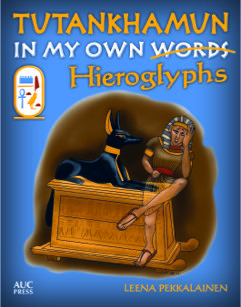 |
|
Tutankhamun: In My Own Hieroglyphs tells the story, for older children, of the life and afterlife of the famous young pharaoh in his own words. Tutankhamun tells us about the trouble he got into as a child in Akhenaten's palace in the new city of Akhetaten, and how he became a boy pharaoh. As we learn, his life changed a lot when he died as a teenager, and long years of boredom started in his tomb with only his pet monkey Fingers and his treasure for company. He did meet some of the Egyptian gods, of course, and had fun scaring off tomb robbers, but it was mostly rather dull. Then one day, some new and strange people, including a Mr. Howard Carter, arrived and began to take all the treasures out of his royal tomb. Fortunately, through the eyes of his beautiful golden mask, Tutankhamun, could have fun again traveling around the world |
Mr Mummific
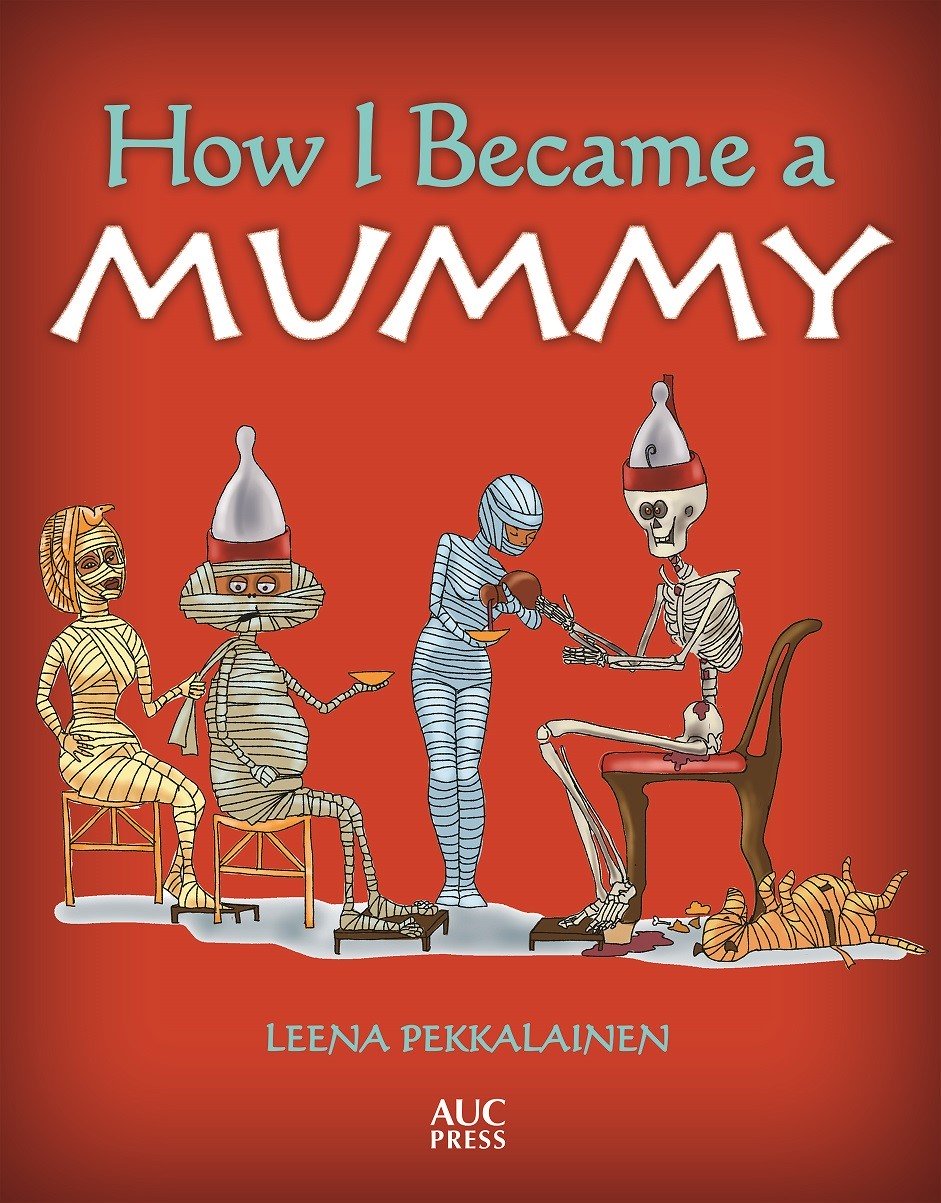
|
An ancient friend of mine, Mr Mummific dictated a book about how he became a mummy - and I was his scribe and artist. The book is available at Amazon.com and Amazon.co.uk On my other website www.ancientagypt101.com he continues his stories about life in ancient Egypt. |
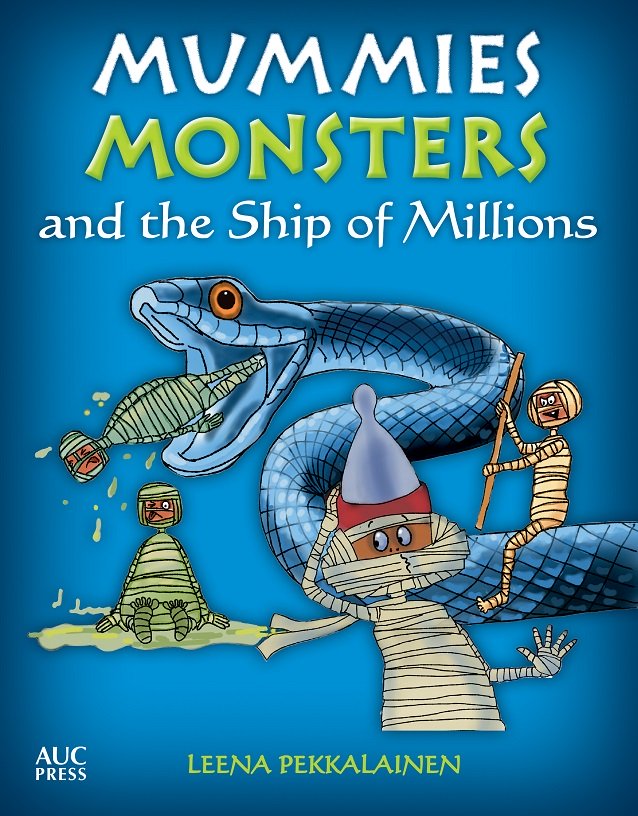
|
Another hilarious adventure for children with Mr Mummific, the mummy with attitude. He now tells the story of his mishaps, misunderstandings and misadventures as he leaves his tomb through the False Door to embark on the complicated and dangerous journey to the Afterlife aboard the magnificent Ship of Millions. Find the book at Amazon.com and Amazon.co.uk |
The Nephilim Quest Series
The first book in an epic fantasy series based on human mythology. The search for the mythical Watchers, the angels who fathered the Nephilim, the half-angels. A story that moves on three levels - our times, ancient Greece and ancient Egypt.
Preview Nephlim Quest 1: Shadowhunter online
***
My Author Website at leenasbooks.com
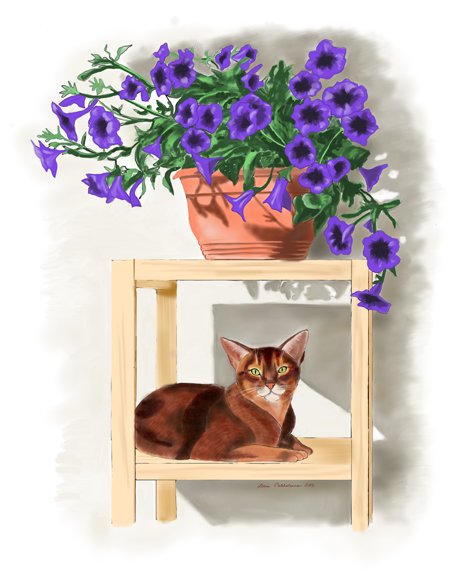
If you are looking for demanding coloring, check:
Online Coloring Books Magazine - No.1
It shows you step by step how to color this pretty Abyssinian cat with flowers. Each page has a color sample, and all the techniques are explained.
